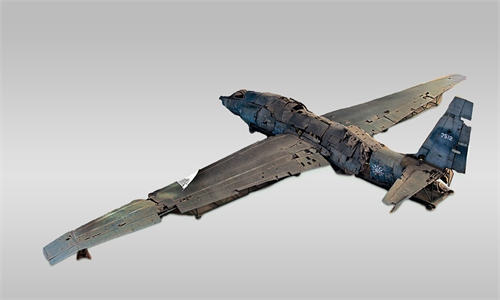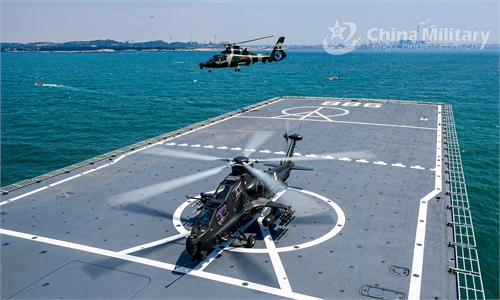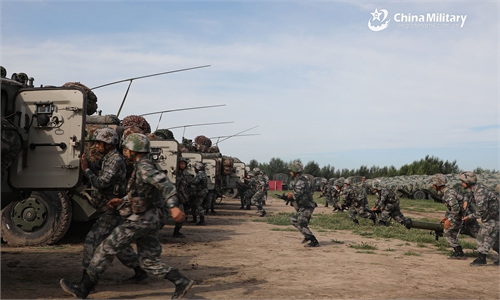US provokes again with ballistic missile-detection plane near PLA drills in S.China Sea: think tank

Xisha Islands in the South China Sea Photo: VCG
A US RC-135S reconnaissance aircraft on Wednesday flew near ongoing Chinese People's Liberation Army (PLA) drills in the South China Sea, one day after another US spy plane, a U-2, trespassed into another PLA exercise restricted zone. The US is increasing the frequency of its close-up reconnaissance of PLA drills in order to pry about the PLA's capabilities, which is provocative, brings the risk of accidents, and could lead to escalation, Chinese experts warned.
The RC-135S is designed to gather data on ballistic missile launches, re-entry and electronic information, which means the US might believe the PLA was conducting live-fire anti-ship ballistic missile exercises in the South China Sea, observers speculated.
An RC-135S of the US Air Force on Wednesday morning flew across the South China Sea, according to monitoring from the Beijing-based think tank South China Sea Strategic Situation Probing Initiative (SCSPI) on the same day.
The aircraft crossed the Bashi Channel from the east, headed southwest into the South China Sea, and returned on the same route, according to a flight trajectory drawn by the SCSPI. It came near an ongoing PLA exercise in waters off Hainan Island's southeast coast.
The PLA drills are being held in the waters from Monday to Saturday, according to a navigation restriction notice released by the Hainan Maritime Safety Administration on Friday, which did not provide further details regarding the drills.
Fu Qianshao, a Chinese military aviation expert, told the Global Times on Wednesday that the main function of the RC-135S is to detect ballistic missiles, among others. The US refitted the long-range RC-135 in order to accurately track the trajectory of a ballistic missile in places without land-based observation stations.
It is not only able to monitor the US' own missiles tests, but also those of other countries, Fu said.
It is possible that the US thinks the PLA would launch anti-ship ballistic missiles like the DF-21D or the DF-26 in the drills, so it sent the RC-135S to gather intelligence, a Chinese military expert who asked for anonymity told the Global Times on Wednesday.
These missiles are extremely threatening to US warships, particularly to its aircraft carriers, the expert said, noting that the US must be anxious and very eager to find out how to counter them.
Fu said that China is the only country in the world that has the technology to develop anti-ship ballistic missiles, and the US is eager to learn about China's approach.
China usually tests ballistic missiles inland to keep confidential intelligence away from other countries, and the PLA also has many other types of exercise subjects that it conducts in the South China Sea, so the ongoing drills do not necessarily feature anti-ship ballistic missiles, the experts said.
If the PLA drills did not feature ballistic missiles, the RC-135S can still attempt to gather intelligence on other types of weapons and equipment with its wide selection of sensors, Fu said.
The RC-135S's close-up reconnaissance of the PLA drills in the South China Sea came only one day after a US U-2 high-altitude reconnaissance aircraft trespassed into a no-fly zone that was hosting a live-fire drill by the PLA Northern Theater Command on Tuesday.
The move seriously violated the code of conduct for the safety of air and maritime encounters between China and the US, as well as related international norms, and could have easily caused misunderstanding and misjudgment, or even led to an air and maritime accident, said Defense Ministry spokesperson Wu Qian in a statement on Tuesday.
A foreign military aircraft trespassing into live-fire drills means that it has become a live target. If the US aircraft had entered the Chinese military drill zone and been mistakenly shot down, the US military would only have itself to blame, Chinese experts said.




